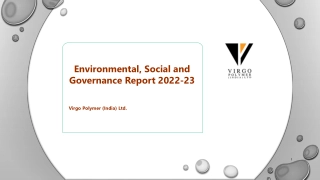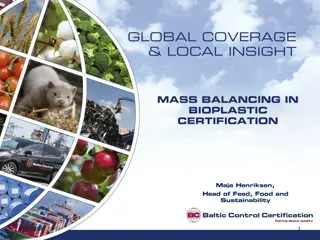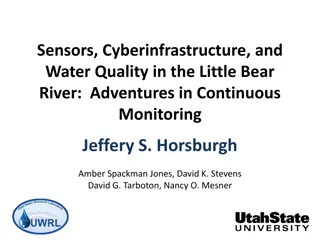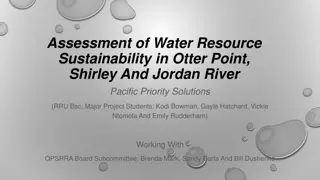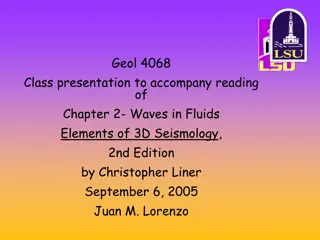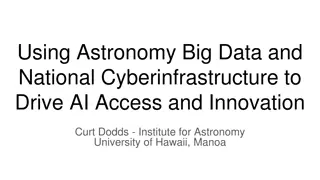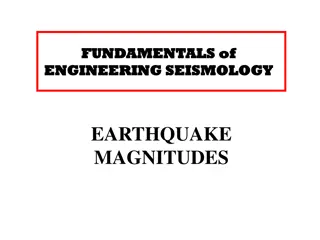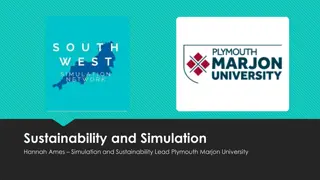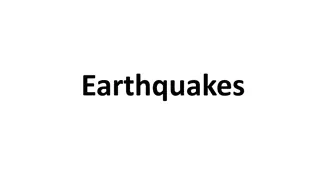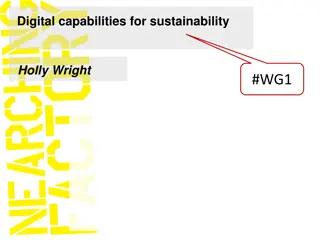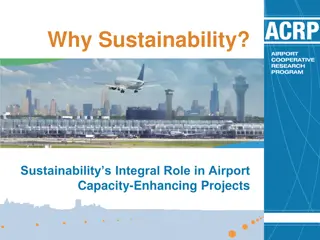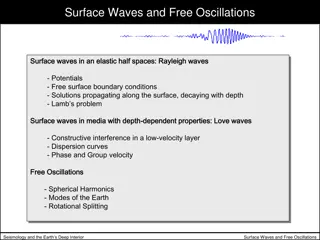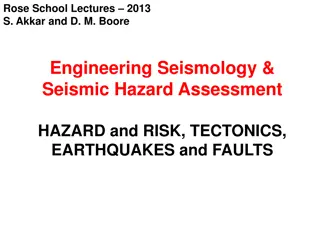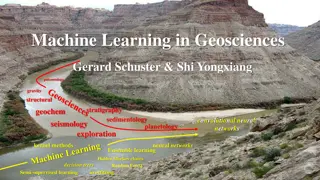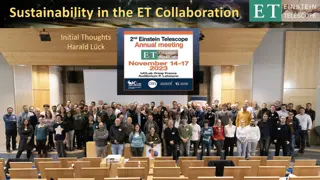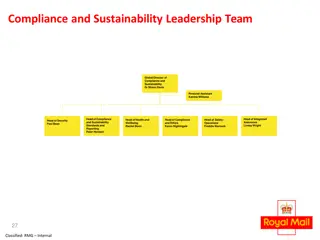Challenges and Sustainability of Cyberinfrastructure in Seismology
IRIS, a consortium in seismology, faces challenges in sustaining its cyberinfrastructure due to legacy systems, limited resources, and the need for domain standards. Models for sustainability include sharing resources to reduce costs while maintaining necessary staff support.
Download Presentation

Please find below an Image/Link to download the presentation.
The content on the website is provided AS IS for your information and personal use only. It may not be sold, licensed, or shared on other websites without obtaining consent from the author. Download presentation by click this link. If you encounter any issues during the download, it is possible that the publisher has removed the file from their server.
E N D
Presentation Transcript
Tim Ahern, IRIS Director of Data Services PANEL: SUSTAINING PANEL: SUSTAINING FACILITIES CI / DEVELOPING FACILITIES CI / DEVELOPING COMMUNITY COMMUNITY
IRIS is An NSF funded University Consortium in Seismology 124 US full members 127 foreign affiliates Has existed for 34 years IRIS Data Services has data from 5 decades ~35,000 globally distributed observation points ~30 types of time series data, not just ground motion ~ petabyte archive growing at ~75 terabytes per year Distributes ~1.2 petabytes per year
What are the dimensions of CI Aspects similar to Big Data, there is no one answer (or solution) Volume storage kilobytes to petabytes single to thousands of cores individual PIs to CI teams Velocity low ingestion rates ~0 to petabytes/day or a few transactions to peta-transactions per day Variety samples - spreadsheets large structured or unstructured files earth science data are very diverse have common attributes of space and time in common Veracity products vetted by domain repositories build trust specific domain formats make it hard for non-experts to trust raw data more general exchange formats can build bridges Most facilities have domain specific needs that are unique differing requirements lead to different approaches most centers are funded by NSF divisions with a domain focus and no overarching NSF approach it is understandable that independent CI solutions exist
What are the barriers towards sustaining CI solutions both within facilities and externally? Legacy systems that have evolved over decades focused on a specific domain s problems often not loosely coupled components but monolithic systems Domain standards are required to support richness of metadata Moving to international standards requires resources that domains may not benefit from CI solutions continually evolve resources at facilities are limited limited facility resources prone to loss of key personnel and knowledge
What are possible models for CI sustainability? Sharing of computational and storage resources are more cost effective Savings limited to primarily hardware, operating, and maintenance costs Does not eliminate need for CI staff at individual facilities Cloud native solutions are viable but will take time Porting of existing IT solutions is far more complex Improved communication between facilities could Improve efficiency of staff Reduce redundancy Encourage interoperability Fee for service NSF funded organizations devalue their contributions Charge for value added services Development of products with broad appeal could be revenue generators
Can sharing, reuse, interoperability provide pathways to sustainability Shared hardware could benefit facilities XSEDE, NSF cloud (Jetstream and Wrangler) etc NSF funded AWS/Azure resources perhaps Use of common frameworks across facilities Common knowledge base and shared expertise NSF CI technical workshops and help desk could improve efficiency and reduce costs XSEDE has a help desk as a base service A few interoperable formats for sharing supported by services HDF5 ASDF netCDF GeoCSV NSF must understand a need to continue being the primary funding agency but it could develop a more cost effective infrastructure
How can we create and sustain a community to facilitate sharing and sustainability? Reduction of costs Providing a common hardware platform with standard tools and services (e.g. Jetstream and Wrangler, Azure, AWS) Negotiation by NSF for facility wide software licenses Shared approaches Annual hands on training workshops for CI technical staff Keep abreast of latest technologies Understand recommended NSF CI solutions Meet their peers from other organizations Reuse software components rather than developing solutions
How can it be sustained? Maintain usefulness to your community Show how assets can be broadly leveraged across domains and communities General public and K-16 Simpler formats that are more easily undestood GeoCSV format from the Earthcube GeoWS Building Block Products and services for a fee Weather Earthquakes Emergency response Science highlights
Thanks I look forward to further conversations Sustainability is a difficult problem and there are no silver bullets to solve this
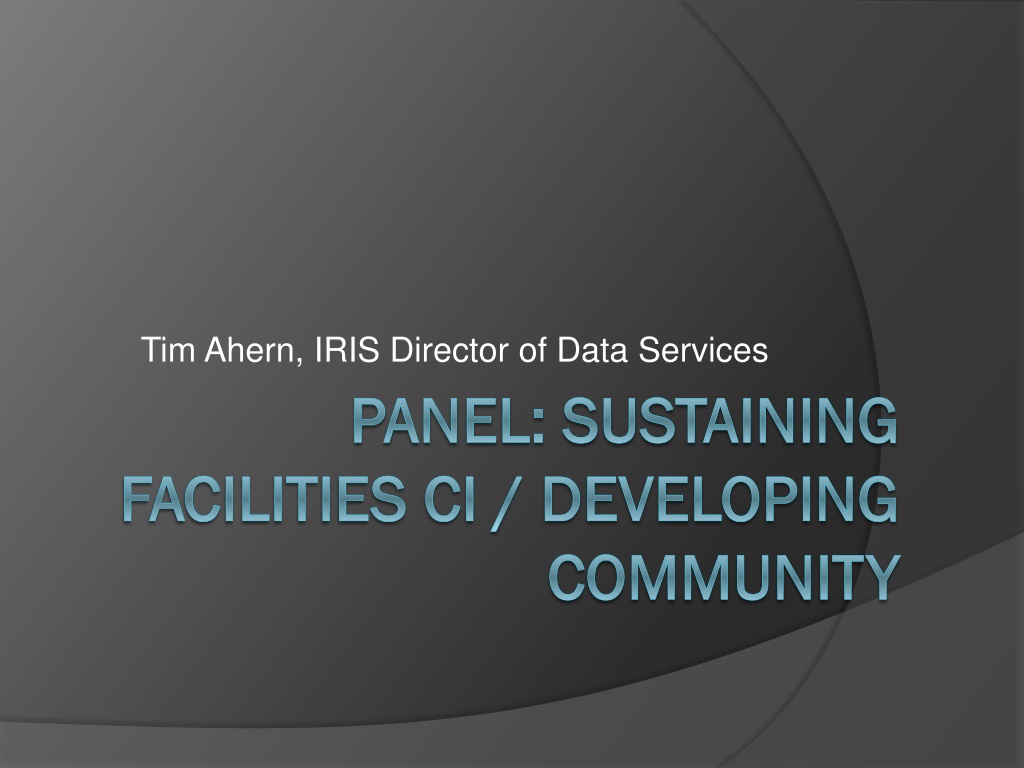
 undefined
undefined






